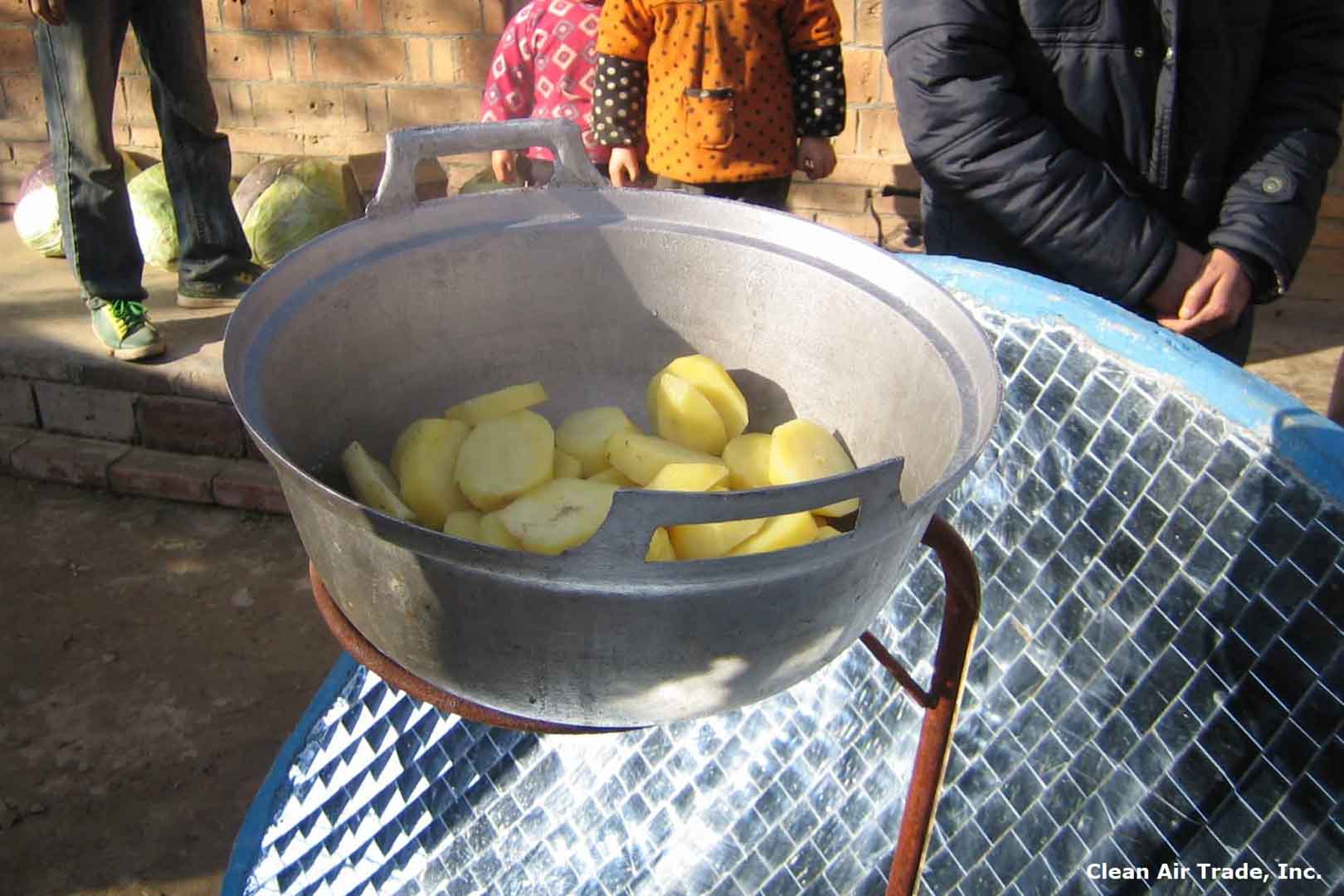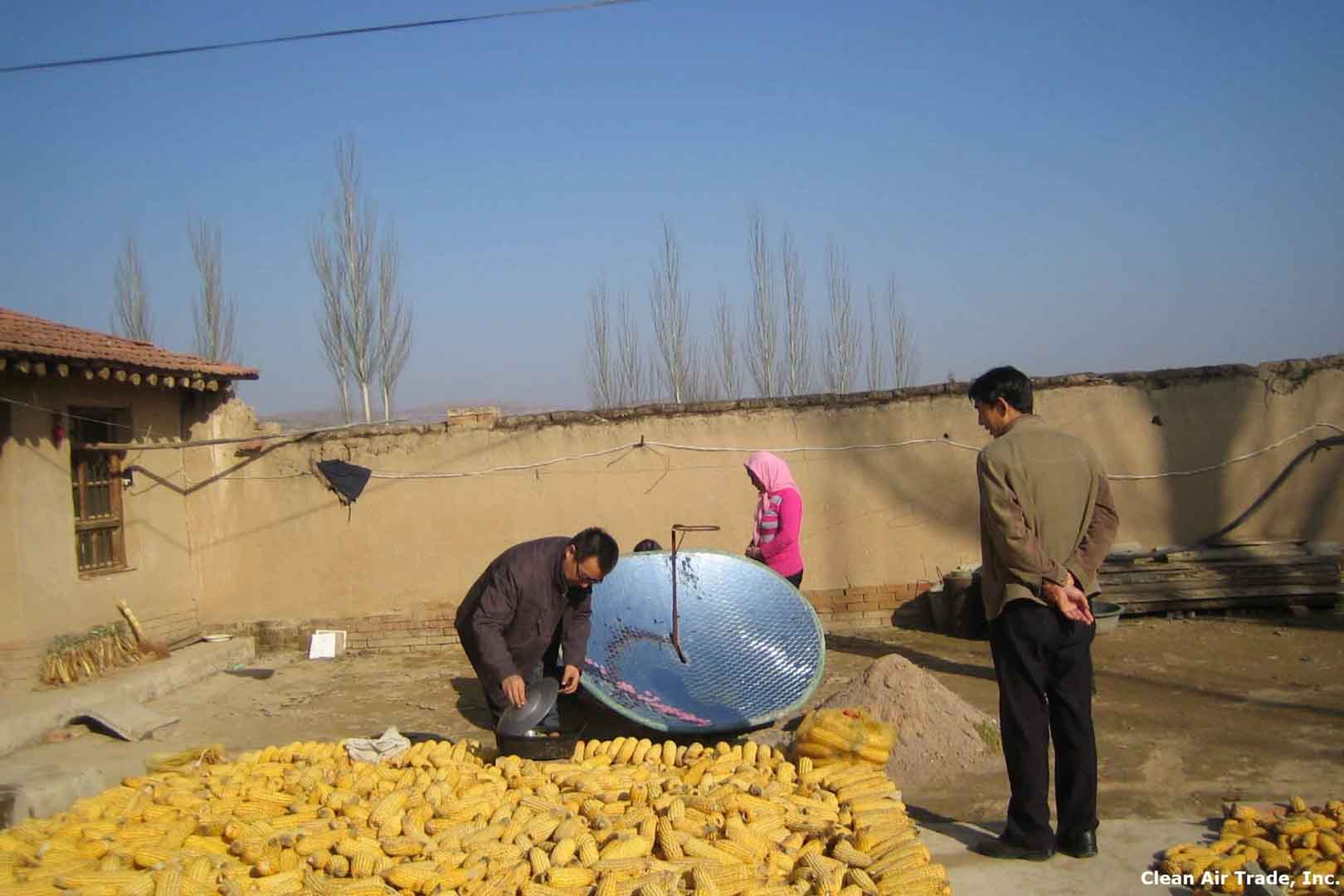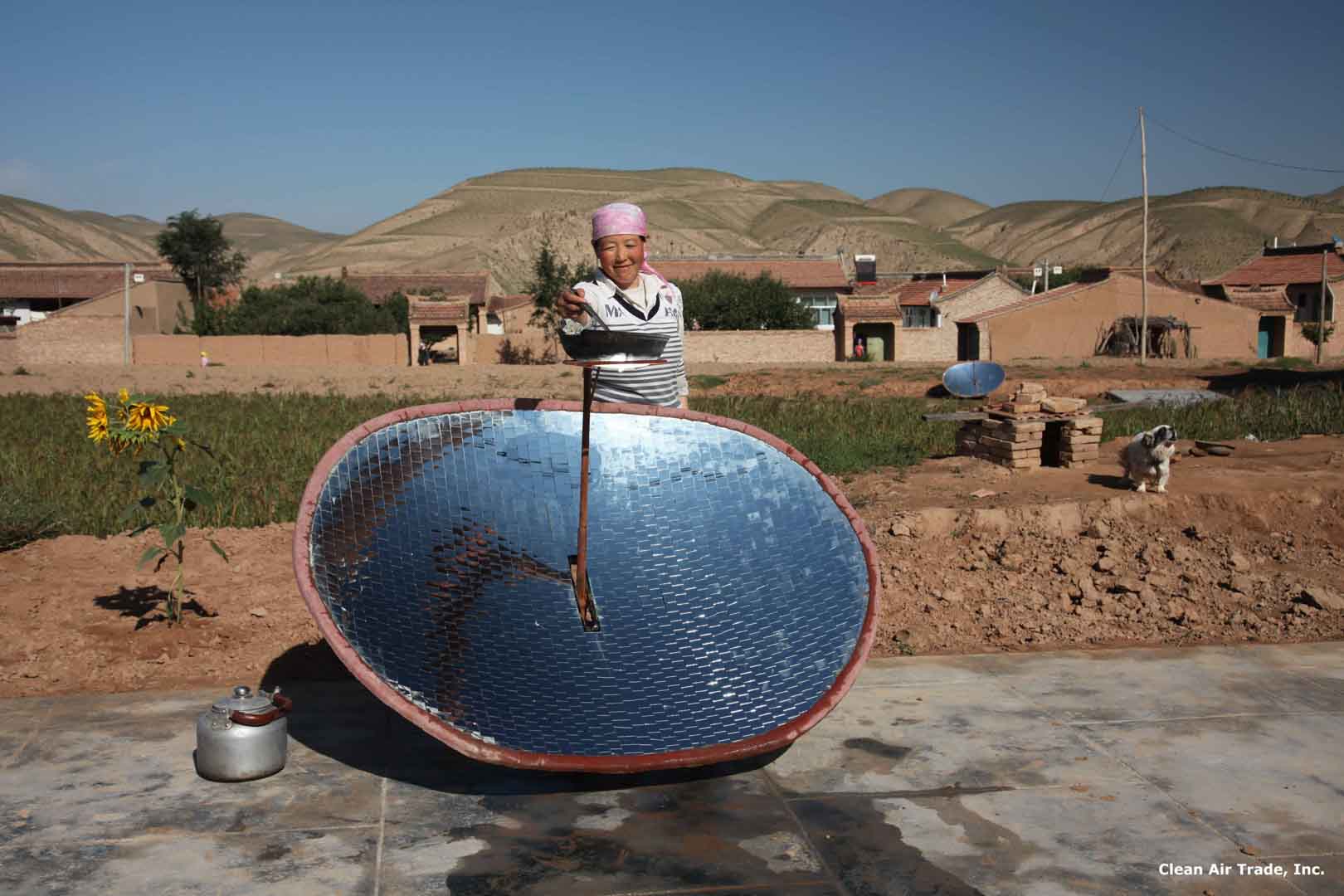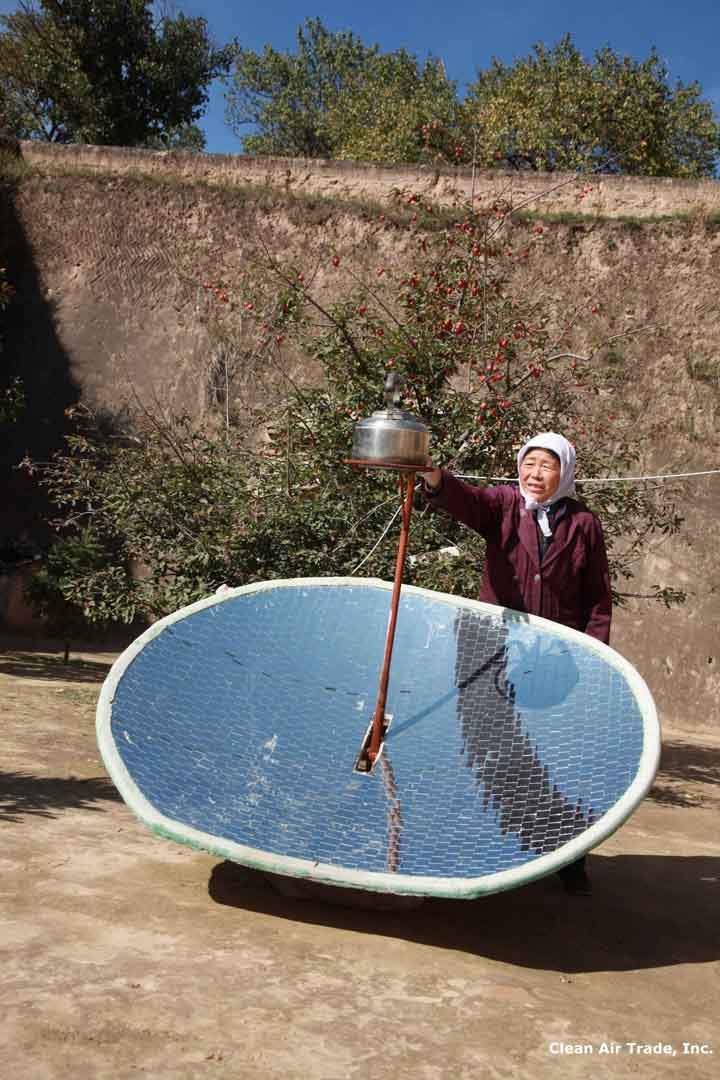Clean energy for China's poorest households
Without the solar cooker, these households would have continued to rely solely on coalfired stoves for their daily necessities like water boiling and cooking, which would have resulted in higher consumption of coal. The solar cookers installed under the projects partially replace the use of coal-fired stoves and therefore reduce coal consumption, directly avoiding approximately 143,760 tonnes of carbon emissions per annum. The projects have also generated a range of co-benefits that collectively contribute to the sustainable development of the local communities they serve.
The projects targeted underdeveloped counties of Ganzhou, Gaotai, and Linze in Zhangye City, Gansu Province. Most residents are considered low-income rural households, whose main source of livelihood is farming. The 98,000 solar cookers distributed are benefitting about 400,000 villagers covering approximately 80% of the local population.

Although the development of renewable energy sources is increasing, energy from fossil fuels is still a significant part of energy production worldwide. This is associated with the release of large amounts of carbon emissions. The use of solar energy is a good way to provide people around the world with renewable energy and reduce greenhouse gas emissions. Solar installations, implemented through solar projects, convert sunlight into electricity (photovoltaic) or heat (solar thermal). Even when the sky is cloudy, the solar thermal power plants generate heat and convert it into electricity. Photovoltaic projects use the photoelectric effect to convert sunlight into electricity.
The energy produced is typically fed into the national or regional power grid, reducing the share of fossil fuels in the electricity mix. In addition to reducing carbon emissions, solar projects also prevent the release of various pollutants associated with conventional power generation. Solar energy projects in the ClimatePartner portfolio are registered with international standards.
Explore our projects
Biochar for Climate Action, Healthy Soils, and Better Harvests

A certified climate project combined with additional commitment

Expansion of renewable energy generation in Asia

Ceramic water filters save CO2 and improve health

Improved cookstoves worldwide – for better health and cleaner air

A certified climate project combined with additional commitment

Powering access to renewable energy in Africa

A certified climate project combined with additional commitment

Restored ecosystems remove carbon

Turning degraded farmlands into healthy ecosystems

Improved cookstoves - better for health and the environment




















